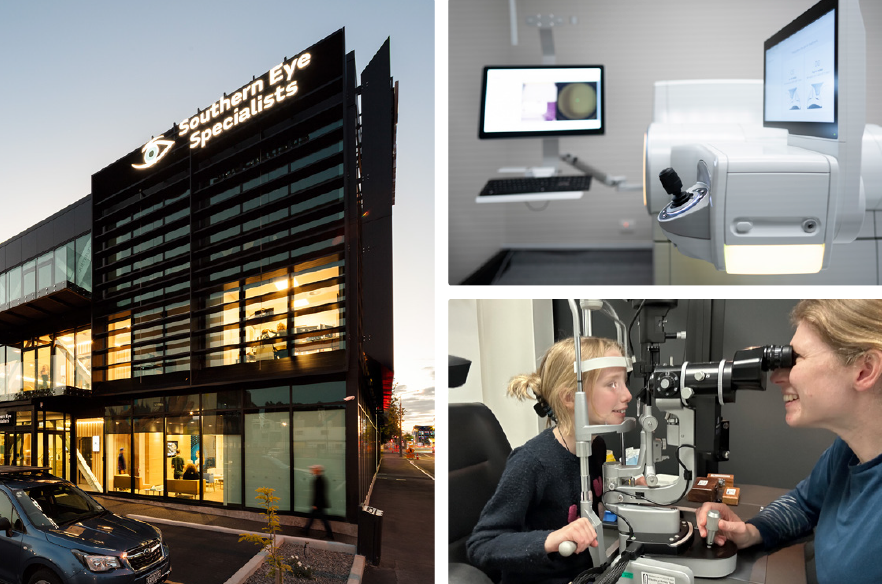Sight for sore eyes
Dr Liz Conner’s multifaceted career in eye surgery has taken her around the world.
Since returning to Christchurch from a fellowship at the University of Pittsburgh Medical Centre (UPMC) Children’s Hospital of Pittsburgh, Dr Conner has slipped easily back into Canterbury life.
“We are delighted to be based in Christchurch. It’s a wonderful, active place for raising children.”
Her work at Southern Eye Specialists is helping fellow South Islanders enjoy the beauty of their surroundings with total freedom.
“We are a sporty bunch, and glasses tend to get in the way of things like mountain biking and skiing,” she says. “It’s difficult to tramp in the rain with glasses and not a great idea to take your contact lenses to the bush.”
She also notes some eye issues are fairly unique to Canterbury as a result of post-quake habits.
“I saw a number of people with contact lens-related infections because they were sleeping in their contact lenses – understandable when there were 10,000 aftershocks, and you didn’t want to get out of bed unable to see until you found your glasses, which had fallen on the floor somewhere.”
For those wanting to reduce their dependence on glasses for clear vision, laser treatment or lens-based surgeries are attractive options.
It’s also an exciting field to be working in for Dr Conner, a specialist corneal surgeon.
“Laser refractive surgery really is the pinnacle of technological advancement in my field,” says Dr Conner. “Our ability to image the cornea, to use lasers to plan a treatment, and then to reshape it to deliver excellent vision has never been better.”
The cornea (that’s the clear front surface of the eye) has always fascinated Dr Conner.
She took an early interest in treating keratoconus disease, a progressive weakening and distortion of the cornea that mainly affects adolescents. It is more common in New Zealand and particularly high in Māori and Pasifika 10–20-year-olds. It is more common in people with Down Syndrome. The treatment is corneal cross-linking, a 30-minute eye-drop-based procedure that is 95 per cent effective at stopping progression.
New Zealand could do much better in identifying keratoconus cases earlier and providing cross-linking to those who need it before they lose vision. Dr Conner currently serves on the National Eye Health Clinical Network, advising on the development of a national screening process to achieve this goal.
“Being able to treat blindness is wonderful,” she says, “but preventing it is better.”
If left to advance, the change in the cornea causes blurred vision and light sensitivity. For a severely damaged cornea, a corneal transplant may be the last chance to preserve vision.
“Restoring sight, often to young, fit, and healthy people, is rewarding work,” she says. “It’s genuinely life-changing for the patient – and the ability we have now to replace tissue with a donor cornea is quite incredible.”
The blend of surgical work between the public and private sectors keeps Dr Conner busy, happy, and constantly innovating – reducing waste in eye care practice is her latest project.
“It gives me the opportunity to help people with disease who need significant intervention to restore their sight, and also the capacity to deliver fast, efficient care with the world’s best technology.”


